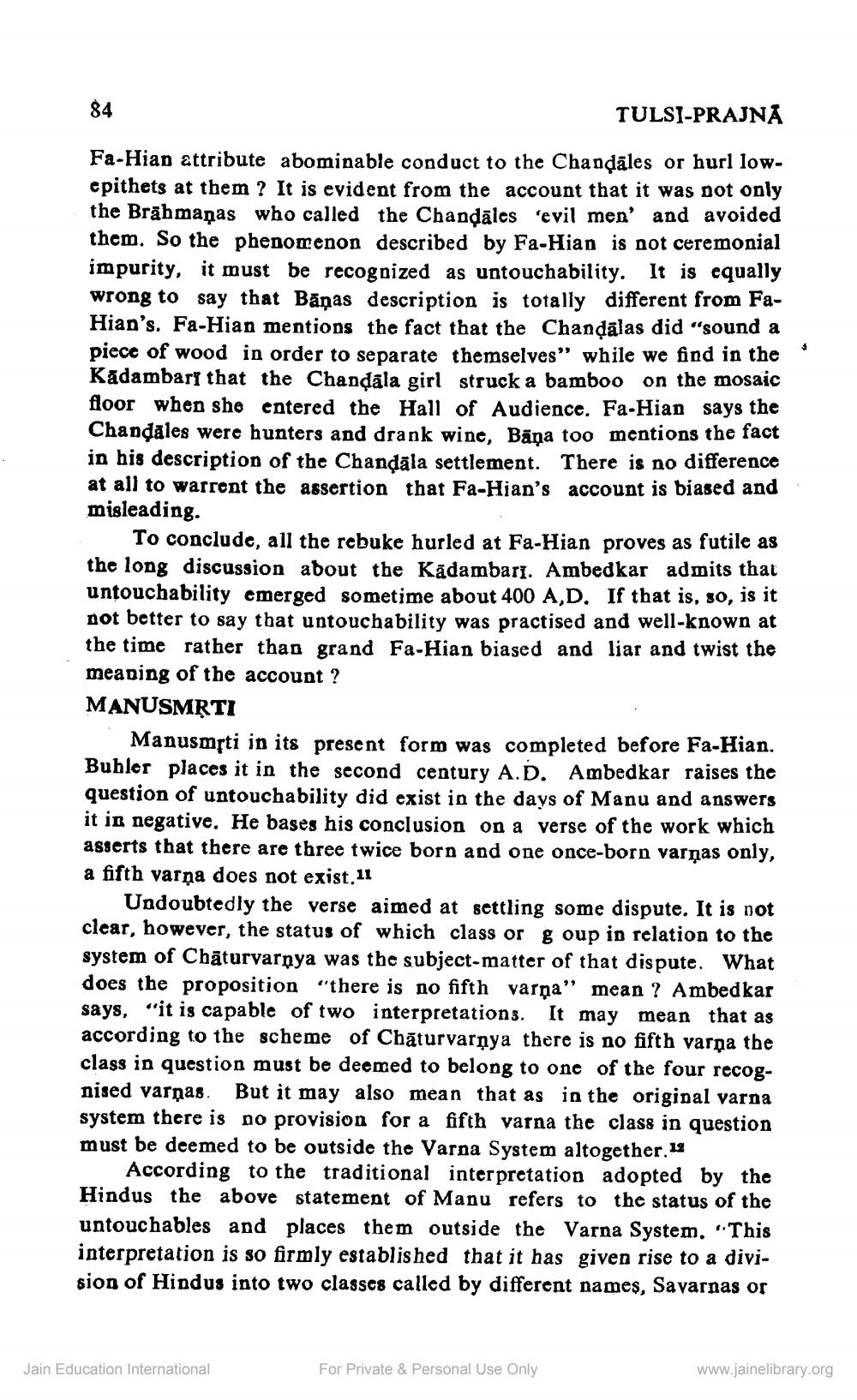________________
84
TULSI-PRAJNĀ
Fa-Hian attribute abominable conduct to the Chandales or hurl lowepithets at them? It is evident from the account that it was not only the Brahmaņas who called the Chandāles 'evil men' and avoided them. So the phenomenon described by Fa-Hian is not ceremonial impurity, it must be recognized as untouchability. It is equally wrong to say that Banas description is totally different from FaHian's. Fa-Hian mentions the fact that the Chanḍālas did "sound a piece of wood in order to separate themselves" while we find in the Kadambari that the Chandala girl struck a bamboo on the mosaic floor when she entered the Hall of Audience. Fa-Hian says the Chandales were hunters and drank wine, Bāņa too mentions the fact in his description of the Chanḍāla settlement. There is no difference at all to warrent the assertion that Fa-Hian's account is biased and misleading.
To conclude, all the rebuke hurled at Fa-Hian proves as futile as the long discussion about the Kadambari. Ambedkar admits that untouchability emerged sometime about 400 A,D. If that is, so, is it not better to say that untouchability was practised and well-known at the time rather than grand Fa-Hian biased and liar and twist the meaning of the account?
MANUSMRTI
Manusmrti in its present form was completed before Fa-Hian. Buhler places it in the second century A.D. Ambedkar raises the question of untouchability did exist in the days of Manu and answers it in negative. He bases his conclusion on a verse of the work which asserts that there are three twice born and one once-born varņas only, a fifth varṇa does not exist.11
Undoubtedly the verse aimed at settling some dispute. It is not clear, however, the status of which class or g oup in relation to the system of Chaturvarpya was the subject-matter of that dispute. What does the proposition "there is no fifth varņa" mean? Ambedkar says, "it is capable of two interpretations. It may mean that as according to the scheme of Chaturvarṇya there is no fifth varpa the class in question must be deemed to belong to one of the four recognised varņas. But it may also mean that as in the original varna system there is no provision for a fifth varna the class in question must be deemed to be outside the Varna System altogether.12
According to the traditional interpretation adopted by the Hindus the above statement of Manu refers to the status of the untouchables and places them outside the Varna System. "This interpretation is so firmly established that it has given rise to a division of Hindus into two classes called by different names, Savarnas or
Jain Education International
For Private & Personal Use Only
4
www.jainelibrary.org




